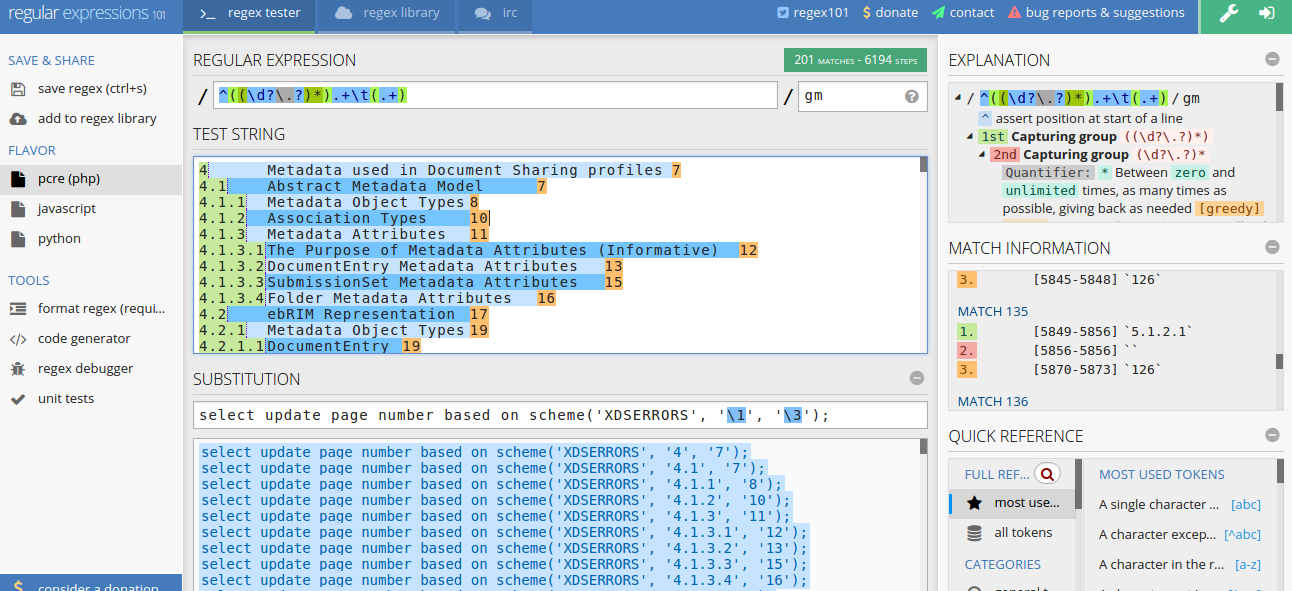

x Matches strings where x is matched, but not y and z.In the paragraph above, you'd get 'operator' and 'were' along with many other words. The problem here is you'd also find a ton of other words.

Your fingers were moving too fast, and you were typing 'dessetrs' half the time instead of reading through it all, you could use the 'or' operator to discover your mistakes: e(rt). Let's say in a body of text, you were discussing desserts. With the 'or' operator, you can start to capture sequences that may be slightly off.
#REGEX DEVDOCS CODE#
It's meant to be used in your code as an expression, not as a coding language.Ī great tool for getting started with regex is Expressions, a Mac app that gives you a standalone sandboxed environment to work with regex expressions. If you have to deal with a massive amount of text, this is a life-saver. You could also use 's.t' in the parser, which will find all words that begin with 's' and end with 't'. You could simply type 'set' into a Regex parser, and it would find the word "set" in the first sentence.
#REGEX DEVDOCS VERIFICATION#
When there's a regex match, it's verification your expression is correct. It uses anchors, quantifiers, operators, classes, and flags to help you parse what's in the text you're asking it to search.Ī regex expression is really trying to find what you've asked it to search for. If you've used HTML before, it's probably fair to say a regex expression is a lot like markup. It's useful for many of the most popular programming languages today, like Java, JavaScript, C-based languages, Perl, Python, Delphi, Ruby, R, and many more. Instead, it's a method to get data from massive bodies of text.
#REGEX DEVDOCS FULL#
The purpose of regex is not to code full programs. We'll provide you with a beginner's regex tutorial, a handy regex cheat sheet, and tell you about some apps to help you along the way.


 0 kommentar(er)
0 kommentar(er)
